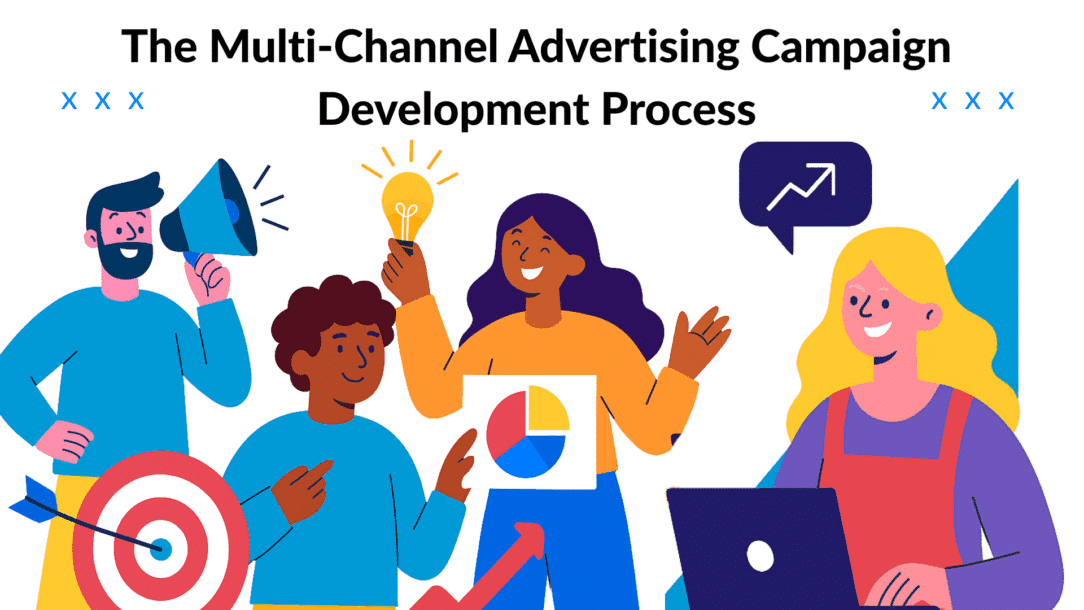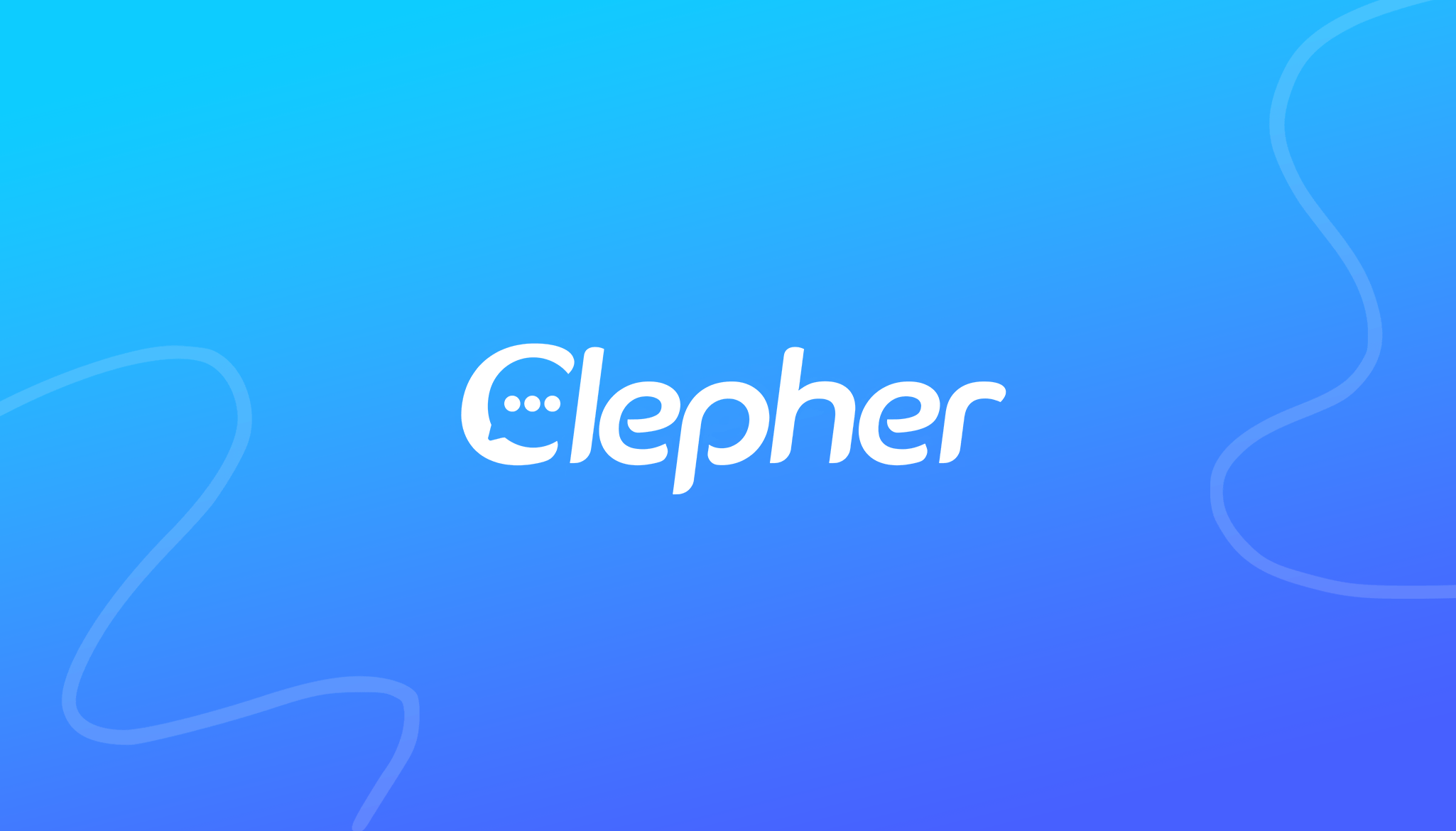Today, I am gonna share a comprehensive multi-channel advertising campaign development process.
If you’re a business that is spending thousands on Facebook ads, Google Search, TikTok, and maybe even email blasts, but still not hitting your revenue goals? Then you’re not alone.
You’re not alone. Companies that run multichannel ad campaigns see up to 3× higher customer engagement than those sticking to a single platform. Meanwhile, businesses using chatbots report up to 67% higher conversion rates.
But the truth? Your customers don’t live in just one channel. They bounce from socials to search to messaging—sometimes all in the same hour. If your messaging isn’t consistent, if follow-ups die, if leads go cold, your campaign is leaking money.
So, how do you build a multi-channel advertising campaign that actually works? One where each channel amplifies the others, engagement climbs, ad spend shrinks, and chatbots do the heavy lifting in converting prospects into customers?
Buckle up.
Below is the blueprint every marketer & business owner needs.
What is Multi-Channel Marketing?
Before we go deeper, let’s nail the definition.
Multi-channel marketing is the practice of engaging customers across multiple platforms, rather than relying on a single source of traffic or leads. But it’s not just about being “everywhere.” It’s about creating a connected experience, so no matter where a person interacts with your brand, they feel like they’re part of the same journey.
Think about how people actually behave today. A customer might discover you on Instagram, read your blog the next day, get an email later in the week, and then finally make a purchase after seeing a retargeting ad on YouTube. That’s the modern buyer’s reality—it’s scattered, non-linear, and driven by attention shifts.
Common Marketing Channels
Some of the most common marketing channels used today include search engines like Google, social platforms such as Instagram, Facebook, TikTok, and LinkedIn, email campaigns, SMS marketing, paid ads across networks, and even traditional routes like print, events, or outdoor media.
Each channel has its own strengths. But when you weave them together strategically, you’re not just chasing customers—you’re guiding them. And this is exactly where the multi-channel advertising campaign development process comes in: it gives you a framework to align these touchpoints into one seamless customer journey.
The data backs it up:
Research shows that businesses using three or more channels in a single campaign see nearly 3× higher engagement rates compared to those sticking with just one. Customers don’t think in channels—they think in experiences. That’s exactly what a strong multi-channel strategy delivers.
Now that you know what multi-channel marketing really means, the next question is: how do you actually pull it off in your digital marketing plans? We will talk about the multi-channel marketing strategies that 9-figure businesses implement in their marketing.
That’s where the multi-channel advertising campaign development process comes into play. It’s not guesswork. It’s a framework. A step-by-step blueprint that helps you connect the dots, keep your messaging tight, and make each channel amplify the others instead of competing.
Let’s break down the process—step by step.
The Multi-Channel Advertising Campaign Development Process
Step 1: Define Clear Goals
No goal? No growth.
This is where most campaigns crash before they even take off.
If you try to chase brand awareness, leads, and sales all in one shot, your messaging gets diluted. Your budget gets spread thin. And your audience? Totally confused.
Pick one primary objective. Just one.
👉 Want awareness? Focus on impressions and reach.
👉 Want leads? Optimize for opt-ins, form fills, or Messenger sign-ups.
👉 Want sales? Watch ROAS and conversions.
A study from CoSchedule found that marketers who set clear, documented goals are 376% more likely to succeed. That’s not a small edge—it’s a complete game-changer.
So before you even pick a channel, ask yourself: What’s the single outcome this campaign must deliver?
Everything else builds on that.
Step 2: Know Your Audience & Their Journey
Your audience doesn’t live on one platform. They bounce across devices and channels constantly.
Research shows 73% of consumers use multiple channels during their buying journey. Even more, 89% start on one device and finish on another. Think about that: someone might see your Instagram ad at lunch, Google your brand later on desktop, and finally convert after an email reminder.
If you don’t map this journey, you’re chasing ghosts.
Start with data you already have—analytics, customer surveys, CRM insights. Then build audience personas that highlight where they hang out, how they buy, and what pain points they care about.
When you know their path, you can design campaigns that catch them at every stage.
Step 3: Pick Channels That Actually Matter
Not every channel deserves your time or money.
Here’s the stat that should scare you: brands using 3+ channels see 250% higher engagement rates than those using just one. But “more” isn’t always better—it has to be the right channels.
If you’re B2B, LinkedIn and Google Search will give you sharper returns than TikTok. Selling to Gen Z? TikTok, Instagram, and maybe even Snapchat are where you’ll win. E-commerce? Mix Facebook, Instagram, Google Shopping, and email.
It’s about being present in the places your audience already trusts—not trying to dominate everywhere.
Remember: multichannel marketing isn’t about spreading thin. It’s about spreading smart.
Step 4: Craft Consistent, Unified Messaging
This is where campaigns often fall apart.
Brands run five channels but deliver five different messages. It confuses customers, and confusion kills conversion.
Research shows 87% of consumers expect a consistent experience across all channels. That doesn’t mean copy-pasting the same headline. It means keeping your voice, promise, and offer aligned—while adapting to each channel’s format.
Example:
- Instagram → visual storytelling, lifestyle images.
- LinkedIn → thought leadership posts + case studies.
- Email → personalized stories + CTAs.
- YouTube → explainer videos or product demos.
It all should feel like one voice, one story. That consistency builds trust—and trust builds sales.
Step 5: Build Channel-Specific Assets
One size doesn’t fit all.
Yes, the core message stays the same. But how you deliver it changes with the channel.
On TikTok, you might use a 15-second trending audio clip.
> On Google Ads, it’s a sharp headline + value proposition.
> On email, it’s storytelling that warms people up.
Think of your campaign like a band. The instruments differ, but they all play the same song. That’s how you get harmony.
Brands that adapt content per channel see up to 60% better engagement rates compared to those that reuse the same creative everywhere.
Step 6: Automate & Speed Up Responsiveness
Here’s a brutal truth: the faster you respond, the more sales you close.
Studies show that if you follow up with leads within five minutes, you’re 21x more likely to qualify them than if you wait 30 minutes. Yet most businesses are too slow.
This is where automation comes in. Tools for scheduling, email sequences, and even chatbots let you be available 24/7 without burning out.
And it’s not just convenience—companies using automation see 451% more qualified leads. That’s a game-changer.
The goal is simple: remove friction, respond instantly, and keep momentum alive across every channel.
Step 7: Track, Measure, Optimize—Nonstop
No campaign is perfect on launch.
The winners are the ones who constantly tweak.
Track the right KPIs for each channel:
- Ads → CTR, ROAS, conversions.
- Email → open rates, click-throughs, and unsubscribes.
- Social → engagement, reach, sentiment.
Here’s why this matters: multichannel campaigns reduce customer acquisition costs by 15–20%, and businesses that optimize regularly see up to 24% higher conversions.
Cut what doesn’t work. Double down on what does. And never stop testing.
Optimization isn’t a step—it’s the engine that keeps the campaign running long-term.
Benefits of Multi-Channel Marketing
Let’s be real: building a multi-channel advertising campaign development process takes work: more moving parts, more testing, more tools.
So why bother? Because the upside is massive.
1. Higher Engagement
Customers don’t stay in one lane. Research shows campaigns that use 3 or more channels generate up to 287% higher purchase rates compared to single-channel campaigns. You’re meeting people where they already are—Instagram, Google, email, SMS—without waiting for them to come to you.
2. Better ROI on Ad Spend
Instead of burning cash on one platform, you spread risk. And when channels support each other, like retargeting Google visitors with Facebook ads, then closing via email, this way conversion costs drop.
3. Stronger Customer Relationships
A single-channel ad feels transactional. When someone sees your brand consistently across multiple touchpoints, it builds trust. It feels like you’re everywhere, which increases brand recall and loyalty.
4. Smarter Data Insights
Running campaigns across channels gives you richer data. You see not just who clicks, but how they move between platforms. That’s gold for refining your strategy and building a customer journey that actually converts.
Bottom line?
Multi-channel marketing isn’t just about doing more. It’s about doing it smarter—so every touchpoint works together to move people closer to the sale.
Best Examples of Multi-Channel Marketing
Theory is nice. But examples? That’s where it clicks. Let’s break down a few brands that crush multi-channel campaigns.
Case Study #1: IKEA’s AR-Powered Multi-Channel Push
IKEA doesn’t just sell furniture. They sell experiences. With their IKEA Place AR app, customers could drop a virtual sofa into their living room before buying. But they didn’t stop there.
- Channels used: Instagram ads, AR app, in-store experiences, email follow-ups.
- How it worked: A customer sees an ad on Instagram → clicks through to try the AR app → visits a store already convinced → later gets email nudges about related products.
- Results: Engagement on AR posts doubled vs. standard social ads, and key stores reported higher foot traffic.
- Lesson: When digital + physical connect, customers feel guided, not sold to.
Case Study #2: Walmart’s Omnichannel Retail Flow
Walmart makes “seamless” look easy. Their strategy connects digital promotions with in-store behavior.
- Channels used: App, QR codes in-store, paid Google ads, email promos, push notifications.
- How it worked: A shopper sees a Google ad → checks availability in the Walmart app → scans a QR code in-store for reviews → gets a push notification later reminding them of the product.
- Results: Higher repeat purchases and loyalty, with customers crossing back and forth between online and offline more than ever.
- Lesson: Don’t separate channels. Sync them into one continuous loop.
Case Study #3: Ralph Lauren’s AI Stylist
Luxury meets automation. Ralph Lauren rolled out Ask Ralph, an AI-powered chatbot in their app. Think of it as a personal stylist on demand.
- Channels used: Mobile app chatbot, push notifications, personalized email campaigns, social ads.
- How it worked: Shoppers chat with Ask Ralph for outfit suggestions → chatbot recommends products with visuals → push notifications remind them later → email confirms with styled lookbooks.
- Results: Session lengths in the app shot up, and conversion rates were significantly higher for users who engaged with the chatbot.
- Lesson: Automation isn’t just about speed—it’s about personalization at scale.
Case Study #4: Klarna’s Automated Support Campaigns
Klarna proved that even “boring” customer service can supercharge marketing when done right. Their AI chatbot supports multiple languages and runs across every touchpoint.
- Channels used: Web chat, app support, email, SMS, push notifications.
- How it worked: A customer asks about a payment plan in-app → chatbot resolves instantly → email follows with detailed confirmation → push notification delivers reminders.
- Results: Resolution time dropped by 87%, satisfaction scores jumped, and the chatbot now handles hundreds of thousands of conversations monthly.
- Lesson: When automation powers consistency across channels, customers trust you more.
Final Thoughts
The truth is, running ads on one platform isn’t enough anymore. Your customers live in multiple places—scrolling Instagram, Googling reviews, opening emails, tapping on SMS, and sometimes even checking out offline events.
If you don’t have a multi-channel advertising campaign development process, you’re leaving money on the table. Period.
The businesses winning today aren’t the ones spending the most. They’re the ones connecting the dots—using each channel to amplify the others, automating the follow-ups, and making sure no lead slips through the cracks.
That’s exactly where Clepher comes in. With smart chatbots and automation, you can bridge channels, capture leads 24/7, nurture them across Messenger, SMS, or email, and keep your campaigns running smoothly without extra manpower.
So here’s your move: don’t just run campaigns. Build multi-channel journeys that guide your customers step by step—from first click to final purchase, and beyond.
Because in 2025 and beyond, that’s not just marketing. That’s survival.
FAQs About Multi-Channel Advertising Campaigns
Q1: What is a multi-channel advertising campaign development process?It’s a step-by-step framework for planning, launching, and managing ads across multiple platforms—like Google, Facebook, email, and SMS—so they work together instead of in silos.
Q2: How is multi-channel marketing different from omnichannel?
Multi-channel = being present on different platforms. Omnichannel = creating a seamless, connected experience across those platforms. Think of multi-channel as the “what,” and omnichannel as the “how it feels.”
Q3: Which channels should I include in my campaign?
It depends on your audience. Popular options include search engines, social media (Instagram, TikTok, LinkedIn), email, SMS, paid ads, and even traditional routes like events or print. The key is weaving them into a single, consistent journey.
Q4: Do chatbots really make a difference in multi-channel campaigns?
Yes. Automation tools like chatbots bridge gaps between channels—handling leads from ads, nurturing them via Messenger or SMS, and even segmenting them for email follow-ups.
Related Posts



